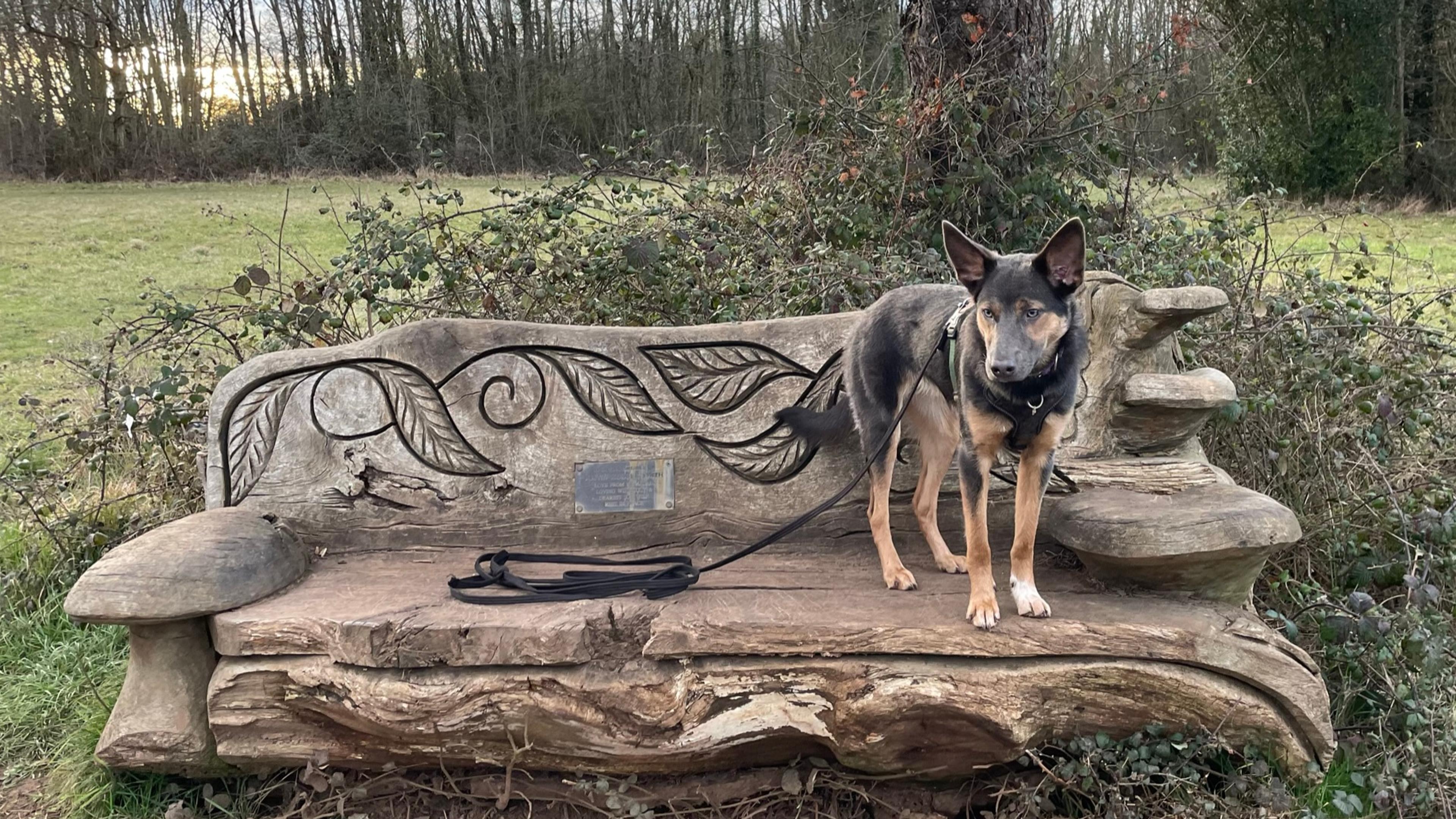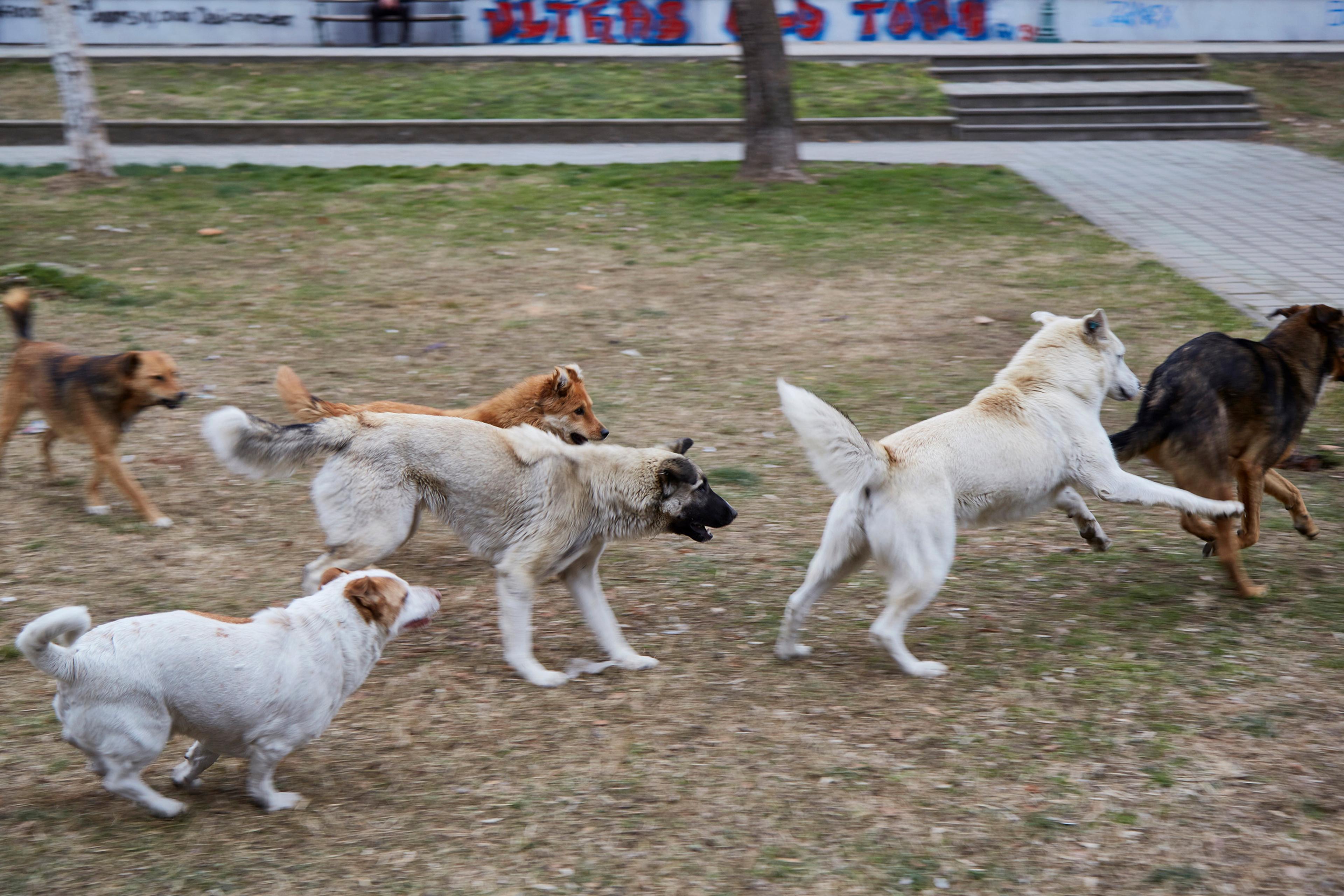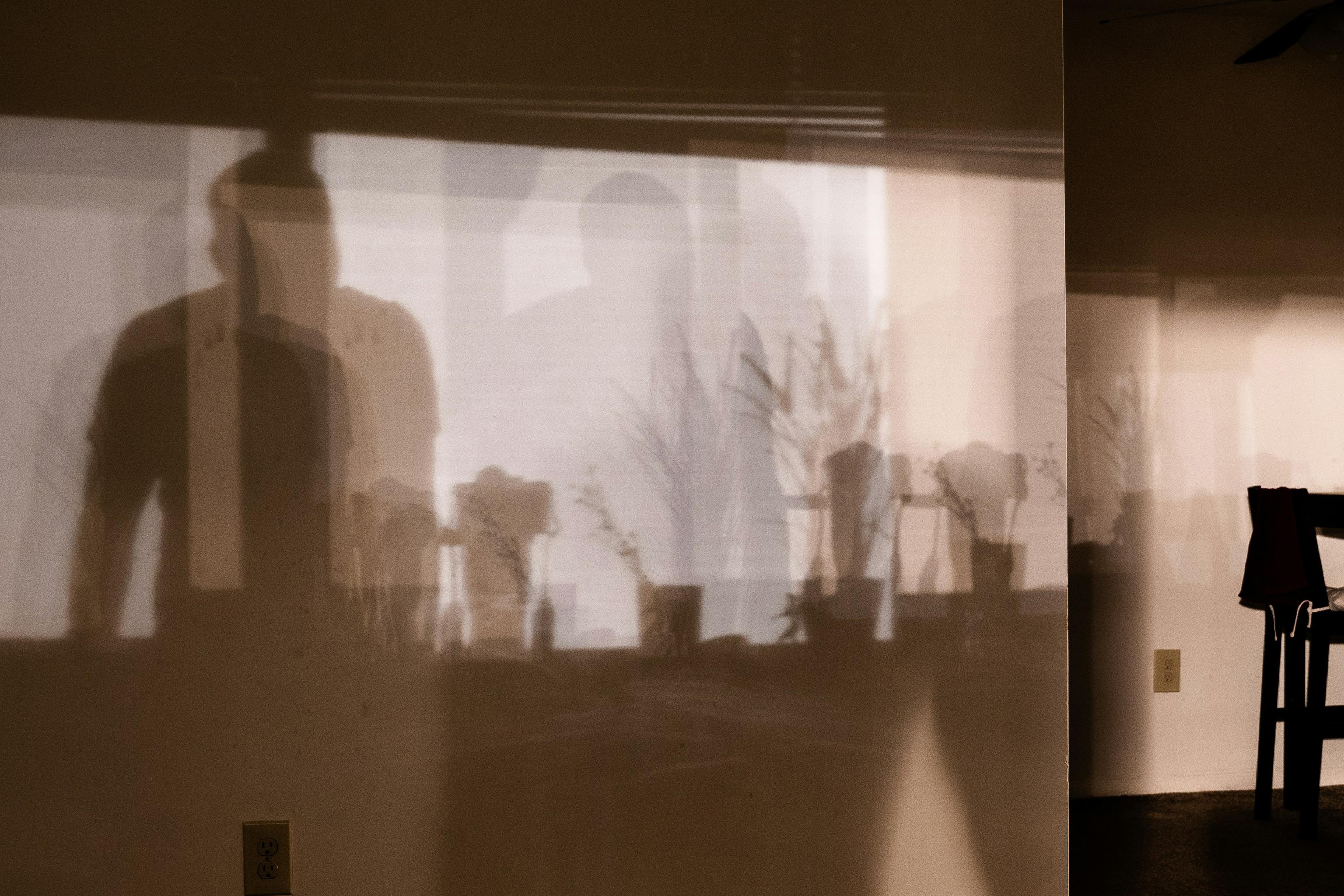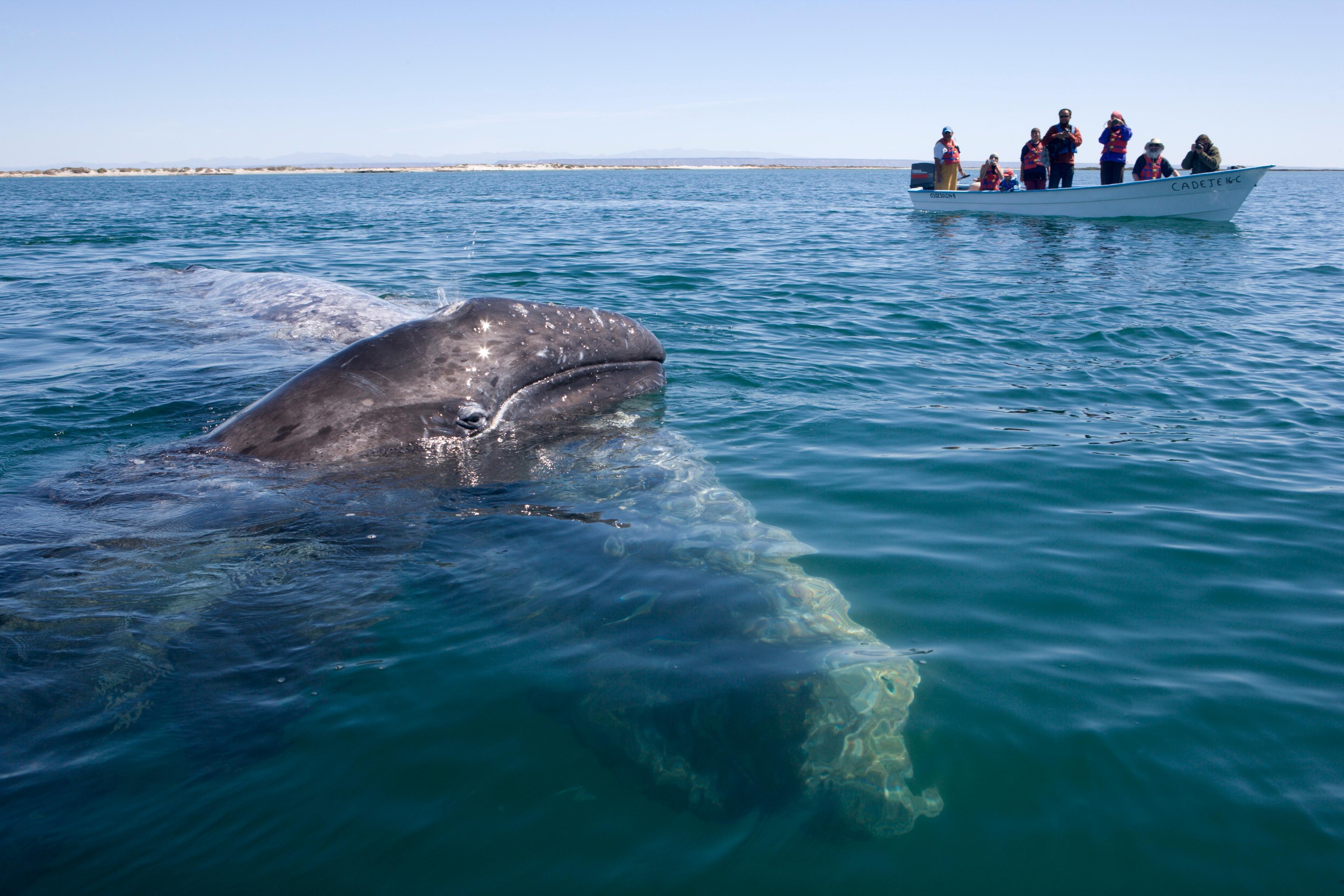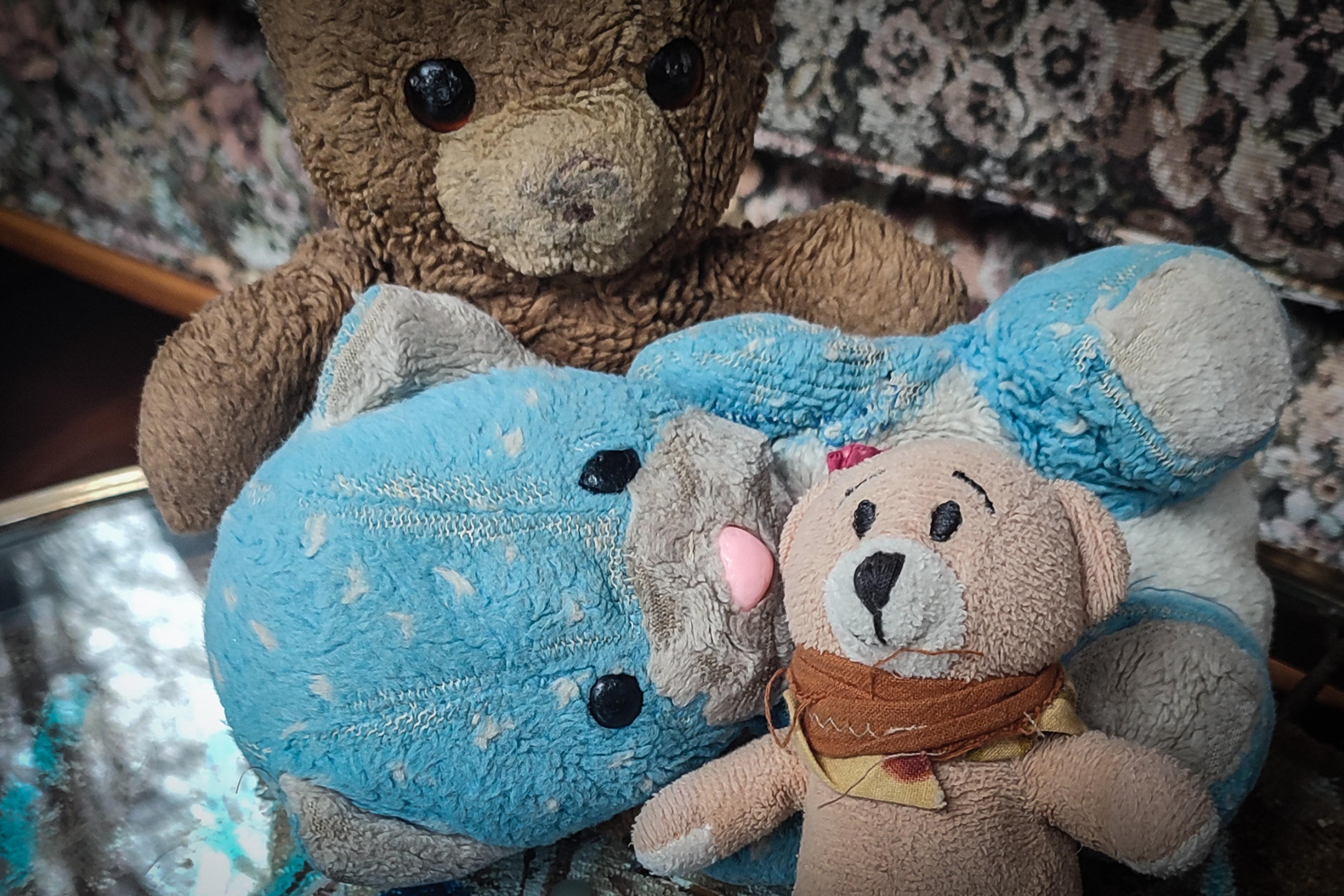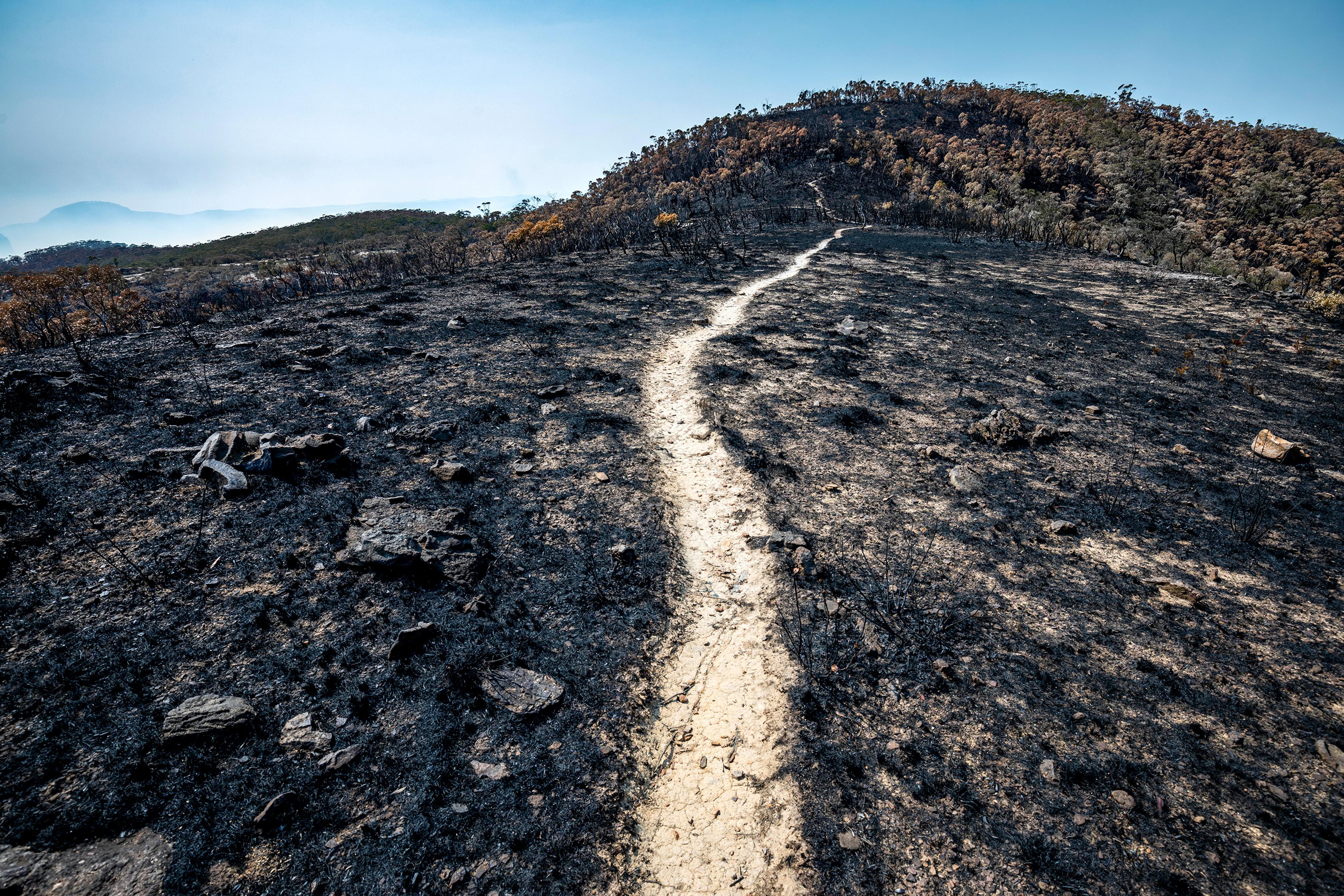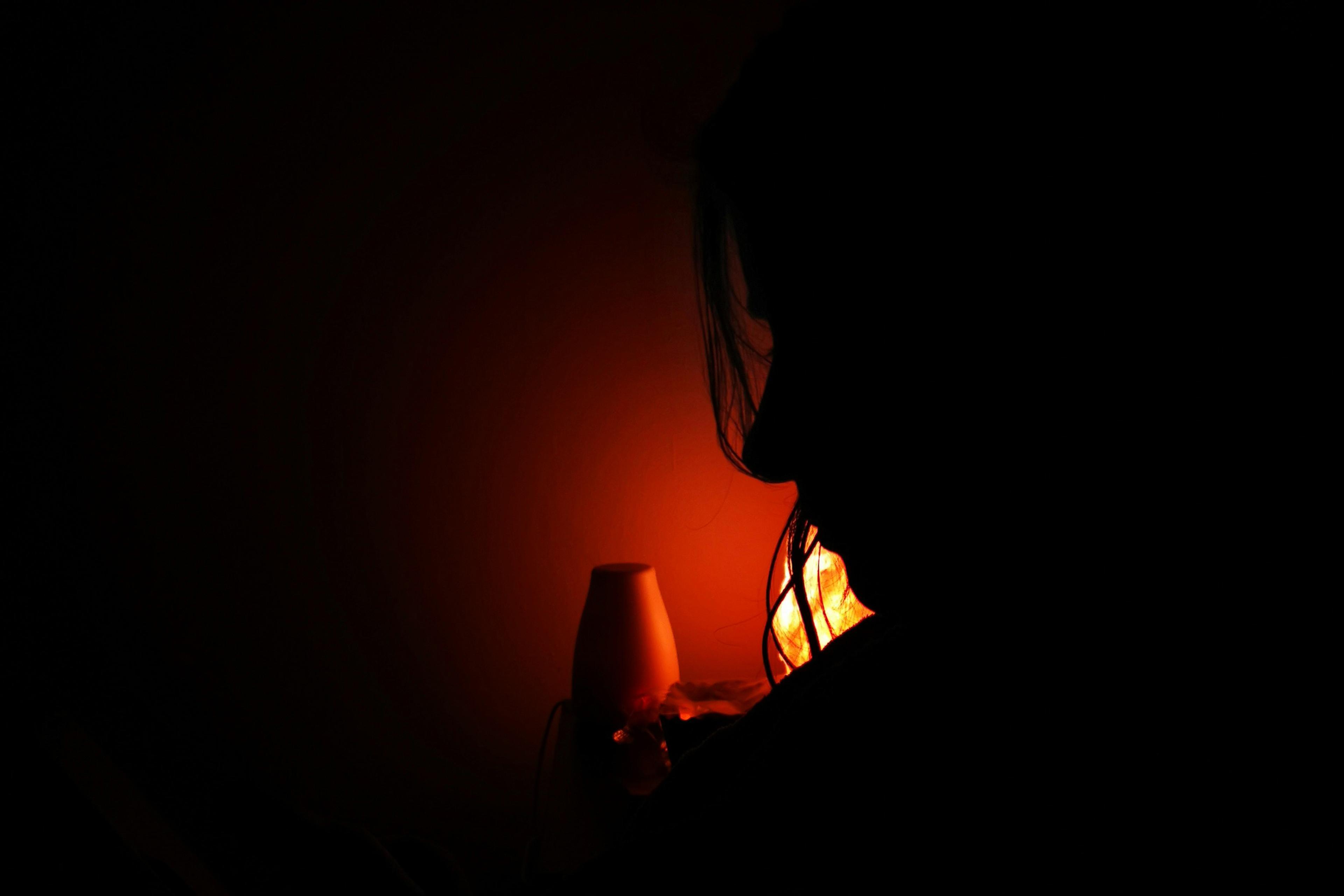There were many reasons to get a dog. My son had wanted one for years and, on a hot camping field in Cornwall, I noticed how tenderly he looked after our friend’s collie, checking she had enough water in the shade of a car. His eyes beseeched me. Plus, I was always looking for ways to bring together the fractured parts of our stepfamily. I told myself that dogs are a salve: the beating heart at the centre of any home. I’d been distracted for months, working on a documentary about harsh realities: cults, sexual abuse and familial neglect, and now I craved stability and safety. At day’s end, I saw myself returning to the fold, cooking lovely meals we’d enjoy round the table, our cute dog at our feet.
Fast-forward one month, and we had our eight-week-old puppy, Elsa. Elsa unravelled our days, destroyed our nights and hijacked our work routine. Restless, permanently wired, she chewed and ripped up everything, nipped us as we tried to stop her and barked whenever we sat down. She had no idea how to sleep. In the evenings, wrung out, we lit the fire, treats at the ready, hoping we might actually get to watch a film. Elsa had other plans.
One night, she threw herself at the back of my head, clamping her jaw around my ponytail. Then she skidded across the coffee table and launched at my partner Robin who braced his knees. Before he knew it, her jaw was round his arm and she refused to let go. As my son arrived, she spun into the hallway and threw herself at his face, licking his nose, before bolting back into the living room where she peed on the carpet.
I grabbed her and plonked her in the garden so I could clean up. But she stood outside the glass door crying. Her crying (like her barking) is loud: both set off alarms in our quiet neighbourhood. I was so worried about the racket Elsa was making, and the dirty looks we now got each time we left the house, that I let her back in. She bombed into the living room and wrestled the kitchen towel off me. Picking her up, I closed the door on her. She cried. Loudly. Perhaps if we put her in her crate she might sleep. She might.
Elsa was a problem. The bigger problem was that we hadn’t done our research. We’d been eyeing German shepherds, a steady, loyal breed – and Robin had grown up with them. But then a friend sent us a link to a litter of puppies, German shepherd crossed with collie and kelpie. We’d bought into the myth that cross-breeds are easier, without giving thought to the specifics of each breed, and these pups were predominantly kelpie. The litter was in Scotland. Robin and I, both writers, instantly succumbed to magical thinking: wasn’t it fortuitous that we’d be at the Edinburgh Festival at the end of the month? Aberdeen was only three hours away. What luck!
They jump fences, run away from you, and foil most attempts at training
Impulsively, we put down a deposit before Googling ‘kelpie’. Highly intelligent, high-energy Australian herding dogs, kelpies are a working breed of independent thinkers, trained to outwit sheep and cows, relentlessly, for hours. Many believe they evolved from crossing a collie with a dingo, to improve their tolerance for heat. In respect of their maverick spirit, owners of kelpies often say that they are ‘owned by a kelpie’. More intense than collies, kelpies are an insane choice for a domestic pet, particularly for inexperienced town-dwellers. Mix a kelpie and a collie, and you have double trouble.
Herders, it turned out, need mental stimulation and at least three hours of exercise a day, and if they don’t get it, they will bark endlessly and destroy your house. They jump fences, run away from you, and foil most attempts at training. I felt a rush of panic: Robin and I work from home, but we need quiet and headspace. Too late. The deposit was paid, my son was thrilled: he’d seen the photos of an adorable pup with two-tone caramel and graphite fur and expressive Anubis ears, and was sold. Foolishly, we told ourselves that the quarter German shepherd in her would be a calming influence.
Those first months were like unleashing a wild beast. She was a ball of energy and destruction, barking and whining when friends came over, and when we had work meetings on Zoom. The brief moments she went quiet, we knew she was in a room she shouldn’t be in, chewing chunks out of the sofa. To contain her, we put baby-gates in all the downstairs.
I held on to the tension Elsa caused me like an iron rod in my spine. Jaw tight, shoulders hunched, I regularly turned to the internet: When do puppies calm down? At nine months, or perhaps 18, the websites jovially told me. Some said three years. Searching ‘working breeds’, I got only generic advice. It wasn’t just ‘zoomies’ (apparently it’s funny when they bomb through the house at high speed, skidding over the furniture) – Elsa paced constantly, panting with stress, barking at the window and begging to be let out; then she barked until we chased her back in. We tried everything: long walks, treats, bones, licky mats, playtime, cuddles, soothing music. Everything made it worse. Later, a dog trainer explained that, every time we waved a tug toy in her face, we signalled that barking led to playtime, rewarding the very behaviour we sought to ameliorate.
Elsa was jealous, and lunged at us, whining, whenever we hugged or sat down
It was no easier on a walk. On the lead, she lunged at other dogs; off lead, she chased joggers and gnawed at their calves. I was so anxious every time a bike or runner appeared, even on the distant horizon, that I’d clip the lead back on. Picking up on my anxiety, Elsa barked like a dog guarding the family home.
When Robin went away one weekend, I realised I couldn’t cope. Every time I sat with my children, Elsa acted out. Also, Robin and I had been arguing. Until then, our coupledom had been a refuge and retreat, a way of recovering from life’s challenges. But Elsa was jealous, and lunged at us, whining, whenever we hugged or sat down for a quiet chat. I was beginning to feel the enormity of my mistake: we should have known better.
A friend who is a dog-assisted therapist offered to take her and train her as her service dog. In the weeks following, Robin and I talked into the night: should we give her up? We swung between believing we’d work it out, to convincing ourselves she’d be happier living in the country, with a job. After a particularly nasty argument, we decided Elsa had to go. When we told my son, he burst into tears and, with 14-year-old feelings and a nose for melodrama, declared he would kill himself.
On what I thought was my last walk with Elsa, I cried at the steering wheel, then spied her in the mirror, soulfully gazing out the window from her safe place in the boot. I felt wretched.
But the last walk never happened. Standing in the centre of a field we both loved, Elsa refused to move. She slipped between my legs and leant into me. I spoke to her in soothing tones. When I tried to walk, she’d shift closer, like a toddler hugging my leg. Tears sprang in my eyes: she was still just nine months old. I was suddenly poleaxed by a powerful sense that she could see her own future: she knew we’d planned to give her away and was wounded by our betrayal. If our home was only the first of many, she would close her heart. If dogs are genetically predisposed to love, as the behavioural scientist Clive Wynne writes in Dog Is Love (2019), maybe we hadn’t tried hard enough to nurture it. I felt profound responsibility for this small creature. We had chosen her for a reason. I just had to discover what it was.
I had been feeding myself a delusional mantra: ‘Before we got her, we were doing all right,’ I’d been telling myself. But the truth was, we weren’t. We were a new couple, a new family, stitched together of sensitive fabric, delicate and easily torn. Robin and I moved in together just before the COVID-19 pandemic, and had buried ourselves in work. The children retreated to their rooms. COVID was catastrophic for my daughter who developed post-viral fatigue, then depression, while I closed down with guilt for having instigated my divorce from their father. I had forced change on us all, and now each of us was stuck.
In accepting her wildness, I have embraced my own
Effectively, with Elsa, we lobbed a grenade into the mix. Elsa was pure animal, pure feeling, an intuitive, reactive soul: the animal spirit we lacked in our reduced, tentative lives. What if everything had to be blown apart before our lives could get better? Elsa was the answer to that question. We had to give her another chance.
The trainer we found was experienced with working breeds. She taught us that dogs read our body language, and that Elsa must have sensed our ambivalence towards her. If we committed to her, it meant taking charge but also being less reactive ourselves. By actively loving her, talking to her in calm tones, reading her better, and responding positively to behaviour we wanted to encourage, she began to feel safer.
The trainer stressed the need for consistency. All of us had to work together and use the same commands. I typed up instructions and taped them around the house. We turned our backs when she barked for attention. Resolved the nipping of joggers and cyclists by training her attention towards us in the face of a trigger.
Elsa is three now. She still resists sleep. Kicks the sofa and yodels when we attempt to watch a movie, but now we find it funny. She’s an extraordinary dog: sensitive, sociable, reliable. She loves to lie on our feet. As for me, in accepting her wildness, I have embraced my own. I’ve learned that I do not need to be perfect in order to be loved. I’ve also learned to embrace the unknown. Recently, I joined a Canicross group and started running with her. I leave the house in the darkness of early morning to meet a friend in the woods, head torches on, our eccentric dogs in their harnesses. We run over rough terrain, jumping over tree roots, splashing through streams. We trust our feet and our intuition. I work hard on my fear of tripping: of getting it wrong. And the freedom is exhilarating.
